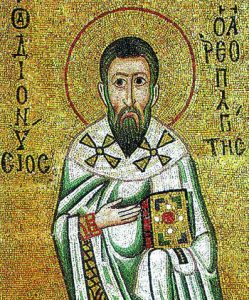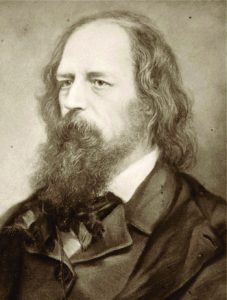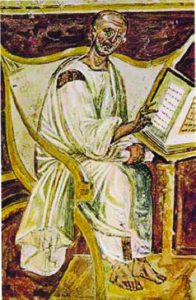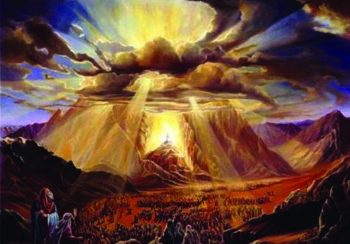A School for Prayer (25) – The Way of Darkness
God in ‘The Cloud of Unknowing’
Part 1 of 2
By Fr Craig Larkin SM, 1943 - 2015
From its beginning, the theology of the spiritual life has rested on two principles of faith spelled out in the Letter to the Hebrews:
Anyone who comes to God must believe that he exists and rewards those who try to find him (Hebrews 11:6).
• God is infinitely close to us:
Closer is he than breathing
Nearer than hands or feet.
Alfred, Lord Tennyson,
The Higher Pantheism
• But God is also infinitely beyond us, the supreme being whom we will never know:
God is more inward than my inmost self and higher than my highest self.
St Augustine, ‘Confessions’ III, 6.11
The immanence of God and the transcendence of God will always find a place – and will always create a tension – in Christian spirituality. We are made to reach union with God. But how? That remains the question.
Two schools of thought
In time, two ‘schools of thought’ arose, indicating two ways in which we can make contact with God. Both these ways find their foundation in Scripture. Both these ways describe Moses’ encounter with God.
In the first, Moses’ encounter is ‘in the light’:
Moses went up with Aaron, Nadab and Abihu. They saw the God of Israel. They gazed on God. They ate and they drank.
Exodus 24:9
God would speak with Moses face to face, as a man speaks with his friend.
Exodus 33:11
In the second, Moses’ encounter is ‘in the darkness’:
Moses went up into the cloud; the people kept their distance while Moses approached the dark cloud where God was.
Exodus 20:19
The cloud covered the mountain, and the glory of the Lord settled on the mountain of Sinai; for six days the cloud covered it, and on the seventh day the Lord called to Moses from inside the cloud. Moses went right into the cloud.
Exodus 25:16
Two Ways, Two Traditions of spirituality
Christian experience says there are two ways of finding God.
i) One is by reason
ii) The other is by ‘mystical contemplation’
In the first way - using our reason - we come to God through knowing.
We can look at everything that is good in creation, and say that since all these things come from God, God must be ‘like’ these things.
At the same time, we have to admit that any idea we have of God cannot contain the truth about God. We cannot say that God is ‘just’, because God is greater than any human idea of justice. The same can be said for ‘mercy’, or ‘love’, or ‘beauty’, or ‘goodness’, ‘truth’ etc. Our ideas of God cannot really grasp God.
In the second way – through mystical contemplation – we come to God through not knowing.
This ‘ignorance’ is a higher form of knowing, and gives us an insight into the unsearchable depth of wisdom.
The first way is called the Kataphatic way – the way of light.
The second way is called the Apophatic way – the way of darkness.
"We can reach God not through what God is, but through what God is not". - St Clement of Alexandria, The Stromata
These two ways are not opposed to each other: they complement each other. The Apophatic way contains elements of the Kataphatic way -- Moses went into the cloud, but he talked with God face-to-face.
Each of these ways forms the foundation of a way of praying.
Dionysius the Areopagite:
The Apophatic Way
One of the great masters of the Apophatic way was a 6th century Syrian writer named Dionysius.
He was called “the Areopagite” because it was originally thought that he was the Dionysius referred to in the Acts of the Apostles.
 For Dionysius, God is beyond all that exists. In approaching God, if we remain with what God has created, we never get to know God as God.
For Dionysius, God is beyond all that exists. In approaching God, if we remain with what God has created, we never get to know God as God.
God reveals something of himself. We can affirm that. That is Kataphatic theology. But what God reveals of himself is not himself. If we want to know God as God is in himself, we must go behind the affirmations we make, and deny them of God. This is Apophatic theology.
According to Dionysius, knowledge of God comes when our mind turns away from all things, including itself. It is by unknowing that we may know God.
Dionysius’ teaching stands in the most ancient tradition of Christian spirituality. He belongs to the tradition of the Desert Fathers, of Evagrius of Pontus, of John Climacus, of Maximos the Confessor and the Cappadocian Fathers. His teaching echoes that of the Hesychastic tradition of the East.
Ascending higher, we say that God is not soul or intelligence, not imagination or conjecture, not reason or understanding.
God is not word or intellection, not number or order, not greatness, not littleness, not living, not life, not essence ... Dionysius the Areopagite
We can see his influence in the later Dominican writers Eckhart, Tauler, and Suso; in the writings of Ruysbroeck, Bonaventure, Thomas Aquinas and John of the Cross.
His influence on the spirituality of both the East and the West continues right down to our own time. The contemporary practice of ‘Centering Prayer’ belongs in this Apophatic tradition and to the writings of Dionysius.
This tradition is the background to one of the greatest works of English spiritual teaching, The Cloud of Unknowing.
God is known by knowing and by not knowing. Of him there is understanding, reason, knowledge, touch, perception, opinion, imagination, name and many other things; but he is not understood, nothing can be said of him, he cannot be named. He is not one of the things that are, and he is not known in any of the things that are; he is all things in everything and nothing in anything. Dionysius the Areopagite - The Divine Names



 Entries(RSS)
Entries(RSS)